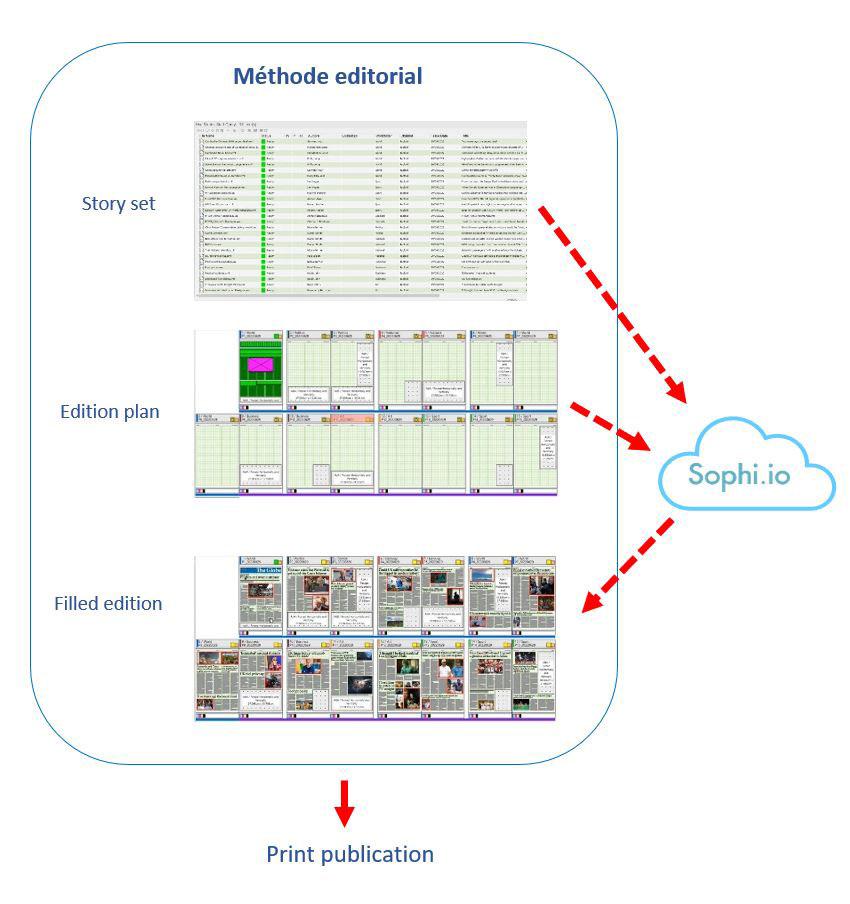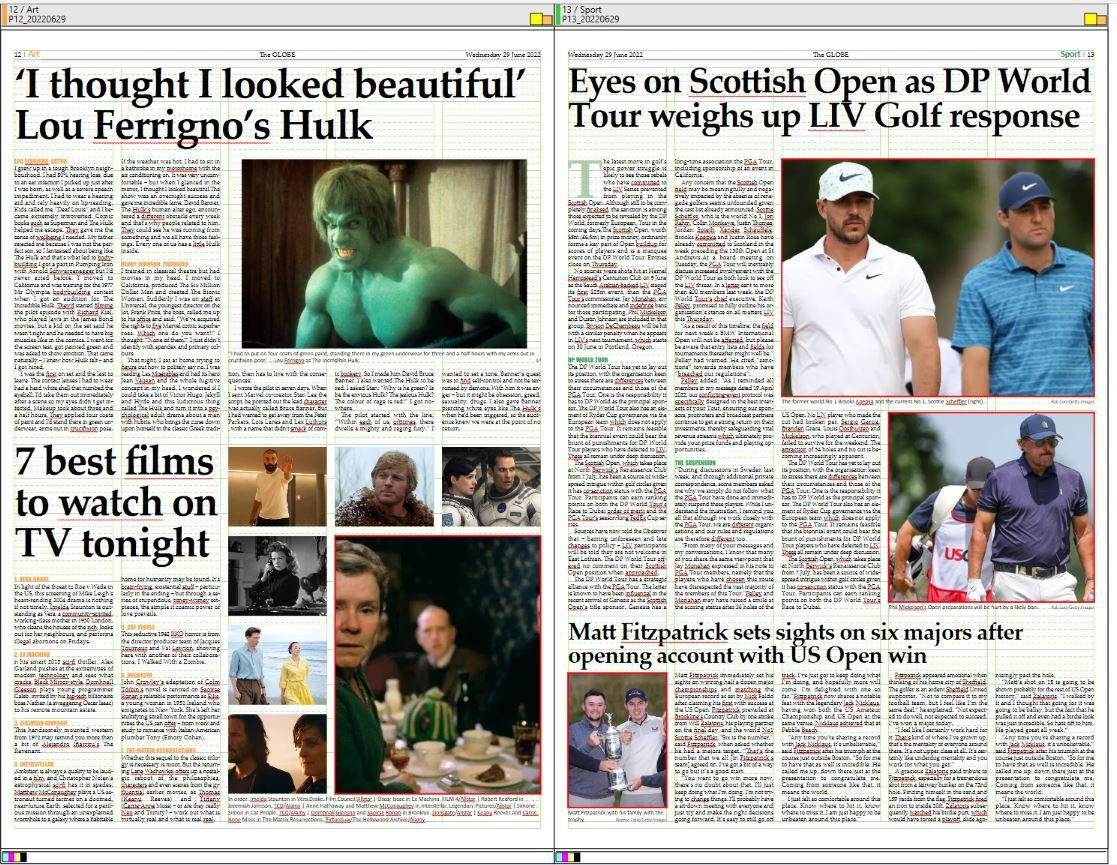Print page automation – the AI solution
An automatic solution for laying out news stories on print pages was unveiled at Eidosmedia’s customer conference last month. Integrating an AI-driven layout tool developed by Sophi.io, the solution promises to boost productivity in what is still a highly manual process in news media operations.
The laying out of news stories on print pages remains one of the most labour-intensive operations in the news-media sector, in spite of the sophisticated template-based solutions that have been developed to streamline the process (see our recent blog post Print page automation – the AI challenge ).
The complexity of print-page design and typography has, until now, defied the easy automation that speeds the publishing of digital formats. As a complex process governed by rules that are difficult to articulate fully, print pagination has become a prime candidate for the application of machine learning.
The AI approach
Eidosmedia has generally been in the forefront of template-driven print pagination, and its Méthode planning and editorial workspace has maximized the productivity of the most complex multi-edition print operations. Nevertheless, the final preparation of layouts for publication typically involves intensive manual activity and, in the case of daily publication, running against a very tight time schedule.
It was to streamline this critical phase of the print news publication cycle that Eidosmedia began a partnership with the developers of the Sophi.io AI engine to explore the possibility of harnessing its power to drive the pagination process within Méthode.
Seeing it in practice
The first results were presented at Eidosmedia’s customer conference held in Milan at the end of June.

Automated print pagination with Méthode-Sophi integration
In the AI-driven page automation, the stories to be paginated are prepared in the usual way, with accompanying images. Advertising is already in place in the page plan (in this case a sixteen-page edition in two books.)
With a single command, the story and image data in JSON format are sent to the Sophi.io AI engine (accessed in pure SaaS mode in a cloud deployment). After a short interval, the pagination data is returned to Méthode and the stories and images are laid out correctly in the edition plan. No further copyfit or adjustment should be required, but staff can intervene manually in the layouts if they wish.
The layout process can be repeated if there are changes to text or image content. In real production conditions, it’s expected that the layout will probably undergo several iterations before final publication. The front page is excluded from the automated process because its branding and promotional importance means that it will normally require manual design.
Preparing the stories
To guide their correct pagination, stories must be pre-tagged with some additional data, such as ‘prominence’, editorial section, headline size and image preferences. Most of these can be set automatically during story creation, others require manual choices.
Configuration and training
Before the Sophi AI engine can create an acceptable layout for a print product, it must be configured with the graphical and typography parameters that define the paper’s visual identity and branding.
There then follows a period of training using existing manual layouts, allowing the model to extract the underlying rules that govern the creation of an acceptable layout. In fact, the training process will continue even after the system enters production as the model ‘learns’ from the manual adjustments made to its layouts.
Who benefits?
The streamlining of the print pagination process is expected to bring benefits to almost every part of the news operation – including, perhaps surprisingly, page designers themselves.
In fact, page designers have been under pressure for some time to increase their productivity as publishers try to cut costs. With fewer hands to lay out growing numbers of pages, the designers’ job has in many cases become a stressful race against time, producing large numbers of routine layouts. The possibility of delegating these repetitive designs to the AI engine promises to free them up to devote more time to the front pages, features and special layouts where their creativity can really add value.
For journalists it marks an end to the need to ‘write to fit’: the tool can accommodate texts of any length (within reason) that the journalist needs to tell their story.
The boost to productivity and reduced production times are also certain to reduce the TCO of the print platform.
Making print sustainable
In many markets readers continue to appreciate the readability and design qualities of print publications. Advertising in print editions is still an important revenue source. Publishers have had to balance these considerations against the costs involved in producing print editions when compared with digital formats.
Page automation promises to ease this situation by bringing digital productivity benefits to the complex process of print publication.

A double-page spread auto-filled using the Méthode - Sophi integration

